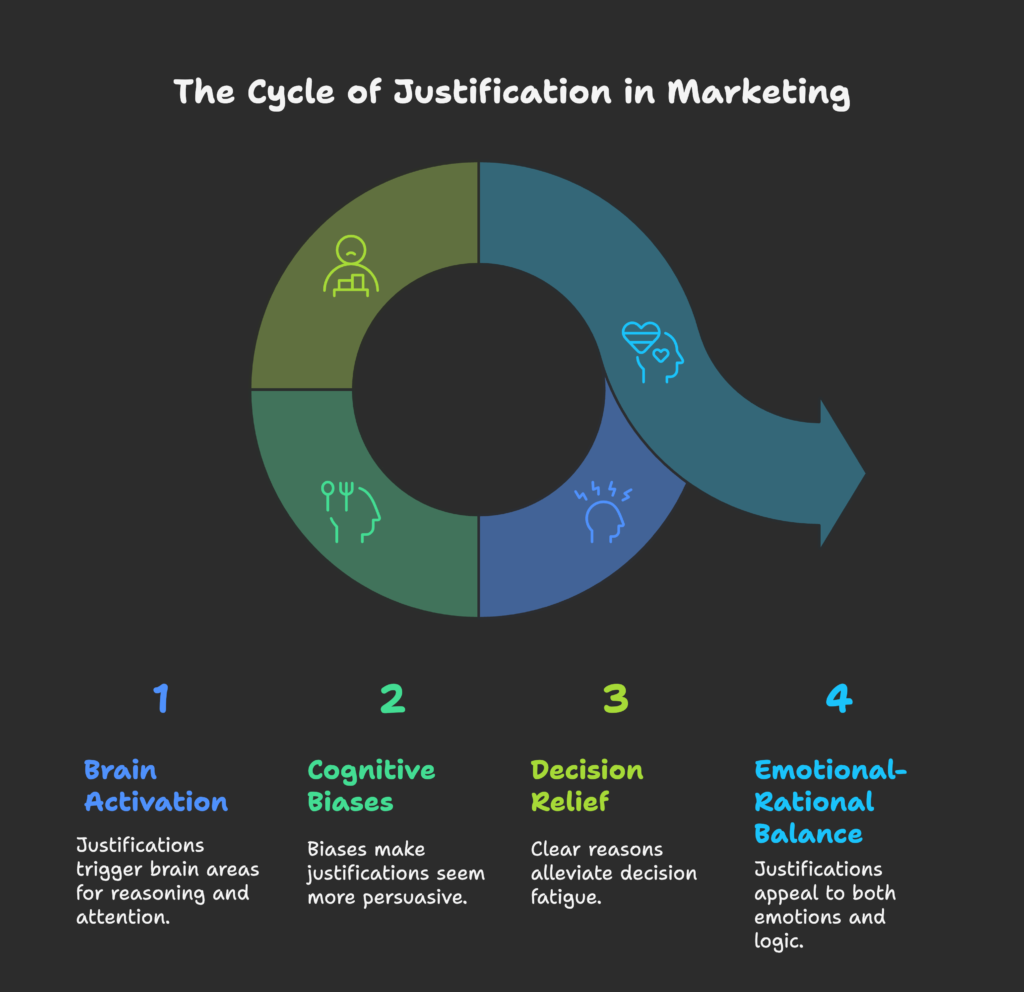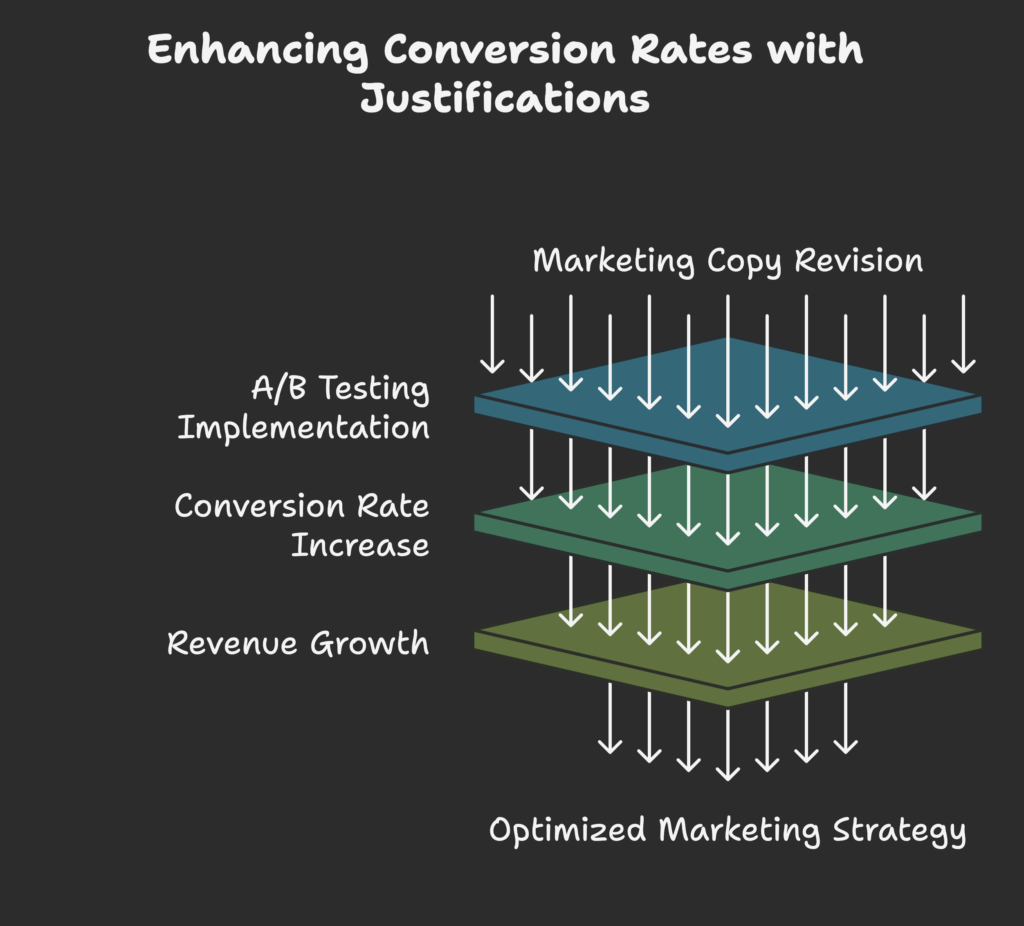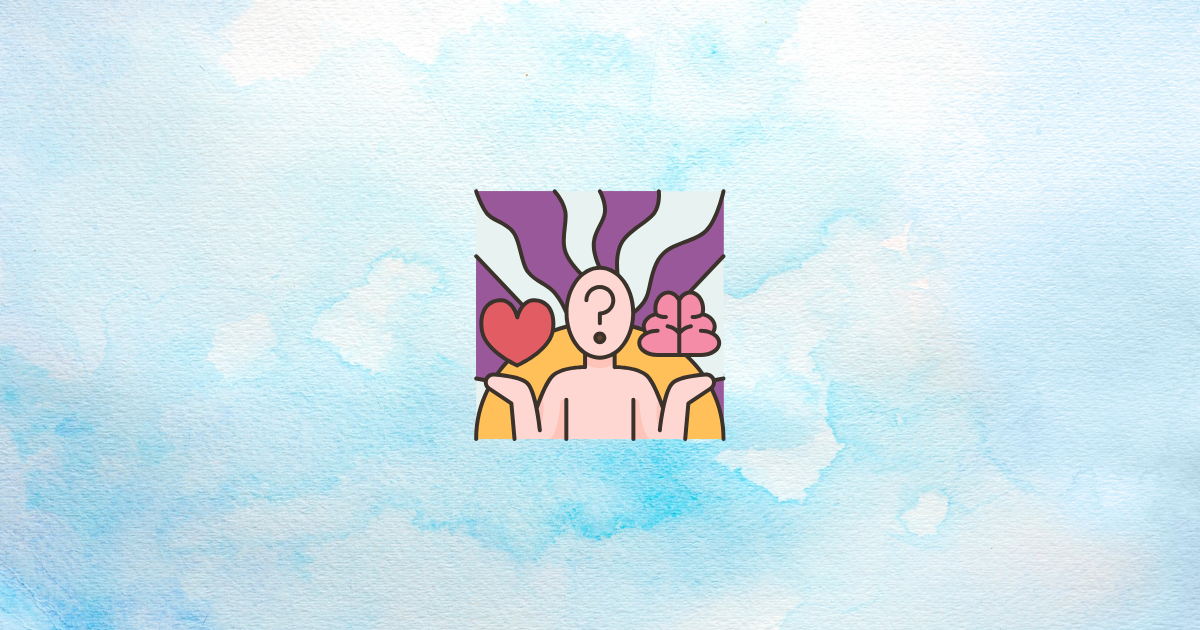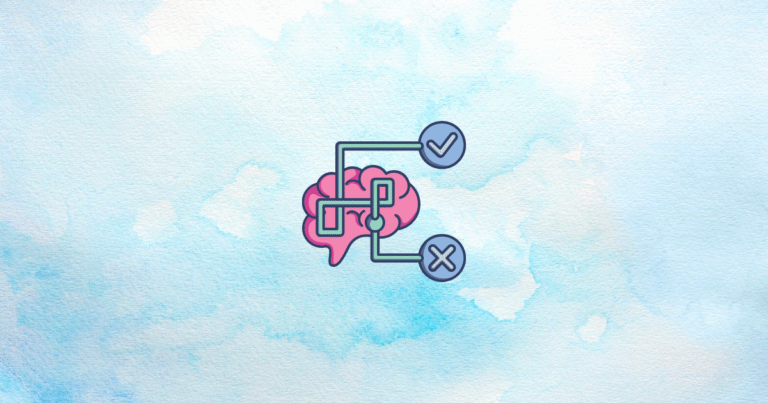Have you ever noticed how one simple word can completely change someone’s response? Maybe you’re making a request at work, or you’re trying to persuade customers to click “Buy Now.” That magical word is “because.” In this article, you’re going to discover why adding a reason—even a small one—can skyrocket your conversion rates. You’ll learn about fascinating studies, brain science, real-world marketing tactics, and how to use justification in an ethical way. Ready to unlock the power of “because”? Let’s dive in!
Introduction to the Psychology of “Because”
In this section, you’ll discover how the human mind craves explanations and why “because” fulfills that craving so effectively. By the end, you’ll see exactly why marketers love using this word and how it can make your messages more convincing than ever.
The Psychological Power of Justification
Our brains are wired to look for reasons behind actions. We feel more comfortable and confident when things “make sense.” This need for clarity translates directly into marketing and sales: when you justify your offers or requests, your audience is more likely to say “yes.” They want a rationale, and once they have it, their resistance often drops.
Ellen Langer’s Groundbreaking Copy Machine Study
In a famous Harvard study by Ellen Langer, people waiting in line at a copy machine were asked if they would let someone cut ahead. When the person simply asked, “Can I use the copier?” around 60% agreed. But when they added the word “because”—even if the reason given was meaningless—compliance shot up to around 93-94%. This study shows how powerfully we respond to the idea that there’s a reason behind a request.
The Automatic Trigger Effect
Using “because” can create what some psychologists call “automatic mindlessness.” Essentially, our minds take shortcuts when they see justifications. We hear a reason and assume it makes sense, instead of fully analyzing its value. In marketing, this means that even a brief explanation can help move people toward taking the desired action.
The Business Case for Understanding Justification Psychology
When you apply justification effectively, you can see dramatic improvements in your conversion rates—whether that’s more sales, more sign-ups, or higher engagement. These shifts aren’t limited to a single industry. E-commerce, SaaS, B2B, nonprofits, and beyond can all benefit from giving clear, compelling reasons.
Curious about what happens in your brain when you see a “because” statement? Let’s move on to the neuroscience behind justification and decision-making.
The Neuroscience Behind Justification and Decision-Making
In this section, you’ll learn how the brain processes justifications at a biological level, which cognitive biases enhance our desire for explanations, and why giving reasons can relieve decision fatigue. By understanding these factors, you can create marketing messages that resonate more deeply with your audience.

Brain Pathway Activation During Justification Processing
When people see the word “because” or any form of justification, parts of the brain linked to reasoning and attention light up. Researchers have found that these triggers help us assess risk, reward, and relevance more quickly. By tapping into this mental pathway, you give your audience’s brain a nudge that says, “Pay attention—there’s a reason here!”
Cognitive Biases That Enhance the Power of Justification
Confirmation bias makes us seek out information that confirms our existing beliefs. Consistency bias nudges us to maintain a stable self-image. Anchoring bias influences how we assess information based on what came first. All these biases work together to make a simple justification seem extra persuasive. When you align your reasons with what customers already believe or want, you’re speaking directly to these powerful mental shortcuts.
Decision Fatigue and the Relief of Justification
After a long day of decisions, our brains get tired. Hearing a clear, concise reason behind a request or offer can feel like a relief. It’s one less thing to figure out on our own. This is why so many successful marketers provide immediate explanations—they’re making it easier for tired minds to say “yes.”
The Emotional-Rational Balance in Processing Justifications
When we evaluate a reason, we tap into two systems: our emotional side and our logical side. A strong justification appeals to both. It might offer a logical explanation (“This product has a high return on investment.”) while also triggering positive feelings (“This product will make your life easier and more fun!”). This dual appeal makes justification incredibly powerful in marketing.
Ready to see how all this translates into real-world conversions? Next, we’ll look at how “because” impacts marketing copy.
The Conversion Impact of “Because” in Marketing Copy
Here, you’ll discover data on how using justifications can boost your conversion rates, examples from A/B tests, and insights into the power law of conversion rate optimization. By the end of this section, you’ll have a clear picture of how a small change in wording can yield major results.

Statistical Evidence of Impact on Conversion Rates
Studies and reports consistently show that adding a simple “because” statement can lift conversion rates across multiple industries. For example, an e-commerce store might see a jump in add-to-cart actions by explaining why a certain product is beneficial (“because it saves you time”). Over time, these small increases can add up to big gains.
A/B Testing Results With and Without Justifications
Marketers who run A/B tests often find that the variant containing a reason (“because…” or “our main advantage is…”) outperforms the version without one. Whether the goal is to get newsletter sign-ups, clicks on an ad, or purchases, the version that includes a clear explanation often wins.
The Power Law of CRO and How Justification Amplifies It
Conversion Rate Optimization (CRO) works on a principle where small percentage increases can produce large revenue gains. When you lift a conversion rate from, say, 2% to 3%, that’s a 50% increase in the number of customers. By leveraging “because” statements, you give yourself a high-impact tool that can push your conversions higher.
Diminishing Returns and Overuse Considerations
However, you can’t just stuff “because” into every sentence and expect infinite returns. If your audience becomes too familiar with these tactics or if your reasons are weak, the effect can wear off. Balancing the frequency and strength of your justifications is key to avoiding fatigue and skepticism.
Wondering how to apply this across different channels? Let’s move on to where and how you can implement “because” for maximum effect.
Implementing “Because” in Various Marketing Channels
This section shows you specific ways to use justifications in web copy, email marketing, social media ads, landing pages, and even sales conversations. By the end, you’ll have a toolkit of ideas to try in your own marketing.
Website Copy and Product Descriptions
On product pages, a brief explanation of why the product is special can encourage more clicks on the “Add to Cart” button. Phrases like, “You’ll love this sofa because it’s made with stain-resistant fabric,” can make a huge difference. Show your audience that there’s a reason they should care.
Email Marketing Justification Strategies
In emails, consider using “because” in your subject line (“Open this because it reveals the secret to quick success”) or early in the body copy. Providing a reason to read on or click through helps people decide quickly and can boost open and click rates.
Social Media Ad Copy Optimization
Social platforms often limit how many words you can use, so make them count. Add a short justification like “because a 10-second workout can still make a difference” to grab attention. Keep it concise but impactful.
Landing Page Conversion Architecture
Landing pages work best when every element—headline, visuals, calls to action—tells a cohesive story. Strategically place justification statements near the call-to-action button or in your hero section. Explain why someone should sign up now or why your solution is different.
Sales Scripts and Conversation Flows
When sales reps are talking to potential customers, providing a reason at the right time can seal the deal. “I recommend you do this now because our offer is about to change next month.” It gives urgency and a sense of clarity, making it easier for the customer to say yes.
Wondering how “because” shapes the way people see prices? Keep reading to find out why justification is so crucial in pricing.
Price Justification: The Critical Role of “Because” in Pricing Strategy
In this part, you’ll uncover the psychology behind price perception, learn how to justify higher prices, and see how offering valid reasons can boost conversions—even if your prices are higher than the competition.
The Psychology of Price Perception
Consumers don’t just see a price and make a decision in isolation. They compare it to mental benchmarks, other product prices, and whether the value feels fair. A solid justification, like better materials or expert craftsmanship, can help shoppers accept a higher cost.
Premium Pricing Justification Techniques
If you’re charging more than average, you need to offer strong reasons why. Maybe your product is handcrafted, or your software offers unique features. Highlight these details. When people know why something costs more, they’re more likely to feel it’s worth the investment.
Discount and Promotion Justification
Even when lowering the price, providing a reason makes the discount feel more special. “We’re celebrating our anniversary, so enjoy 20% off!” This simple explanation can increase the perceived value of the deal and keep your brand image strong.
Context-Based Price Framing
Placing your price next to a more expensive option (“This item is cheaper because we skip fancy packaging”) can make the deal look much better. Showing the context or comparison clarifies the reason behind your pricing strategy and makes your offer feel transparent.
What if you want to craft even more compelling justifications? Let’s look at how to shape them for maximum impact.
Crafting Effective Justifications That Convert
In this section, we’ll explore the anatomy of a strong justification, the difference between benefit-driven and feature-driven approaches, and how to use data or storytelling. By the end, you’ll be ready to fine-tune your own justifications for better results.
The Anatomy of a High-Converting Justification
A great justification is specific, relevant, and carries an emotional spark. Specificity makes your reason believable, relevance keeps it aligned with your audience’s needs, and an emotional spark engages the heart as well as the mind.
Benefit-Driven vs. Feature-Driven Justifications
Do you focus on the benefit or the feature? Both can work. If you’re selling running shoes, a benefit-driven justification might be: “Buy these because they’ll help you run faster with less foot fatigue.” A feature-driven approach might say: “Buy these because they’re made with next-generation cushioning technology.” Test both angles to find what resonates with your audience.
Data and Statistics in Justifications
Numbers provide credibility. When you can say, “because 87% of our testers reported immediate relief,” you instantly sound more convincing. It’s concrete proof rather than empty hype.
Storytelling as Justification
People remember stories more easily than isolated facts. If you can turn your reason into a short anecdote, your audience is more likely to connect with it and remember it. “We created this product because a busy mom was juggling three jobs and needed a faster solution.” That’s a powerful narrative that shows real-life relevance.
Testing and Optimizing Justification Language
Don’t assume your first justification is perfect. Use A/B testing, customer feedback, and analytics to refine. You might discover slight wording changes can dramatically affect how your audience reacts.
Think that’s all you need to know? Wait until you see the psychological triggers that can make “because” even stronger.
Psychological Triggers That Amplify “Because” Effectiveness
Next, we’ll explore how combining “because” with other persuasion triggers—like scarcity, social proof, and authority—can give your conversion rates an extra boost. By the end, you’ll know how to stack these triggers for maximum effect.
Scarcity and Urgency Combined with Justification
Everyone hates missing out. When you say “because we only have a limited number in stock,” you add urgency and scarcity to your justification. This can prompt faster decisions, as people worry they’ll lose an exclusive opportunity.
Social Proof as Supportive Justification
Back up your “because” with testimonials or user data. “Join over 10,000 happy customers who switched to our service because it’s more reliable.” This combination of “because” + social proof often drives action better than either one alone.
Authority and Expertise in Justification Construction
Citing experts or mentioning credentials can strengthen your reason. “Our tool is recommended by leading dietitians because it follows the latest health guidelines.” Aligning your product or service with authority figures adds weight to the justification.
Reciprocity Principles in Justification
When you give people a valid reason for your actions, they often feel more inclined to reciprocate with trust or a purchase. It’s similar to offering a small gift: you give a good explanation, and they’re more open to returning the favor by clicking “buy.”
All these techniques sound great, but are they ethical? Let’s explore how to stay on the right side of persuasion.
Ethical Considerations in Using Justification for Conversion
This section covers authenticity vs. manipulation, transparency, and how your long-term brand can be affected by your justification strategy. By the end, you’ll see how to use “because” responsibly.
Authenticity vs. Manipulation
Not all reasons are created equal. You want your justification to be both genuine and valuable to the customer. If you give a flimsy excuse, you might boost conversions temporarily, but damage trust in the long run.
Transparency in Reason-Giving
Customers can sense when you’re hiding something. Being open and honest—“We’re offering this discount because it’s our business’s anniversary”—helps people feel comfortable about purchasing. They sense respect and honesty from your brand.
Long-Term Brand Trust and Justification Strategy
If you’re always giving valid, meaningful reasons, people will come to expect clarity from you. This can increase brand loyalty, as customers appreciate straightforward communication. Over time, consistent honesty builds a strong relationship.
Regulatory and Compliance Considerations
In many industries, you can’t make claims without evidence. If you use “because,” ensure it aligns with the truth. Be aware of rules and regulations to avoid penalties and maintain trust.
Eager to see how this works in real-world scenarios? Up next are some eye-opening case studies.
Case Studies and Examples of Successful Justification Implementation
Here, you’ll find real-life transformations from e-commerce product pages to B2B lead generation forms. Each example highlights how a well-placed justification can boost results in different contexts.
E-commerce Product Page Transformations
Some online stores have taken a dull product description—“Buy this smartphone”—and turned it into “Buy this smartphone because it has a battery life that lasts three days.” The difference in click-through rates and overall sales can be astounding.
SaaS Sign-Up Flow Optimization
Software companies often see improvements by explaining why users should register now. For instance, “Create your account because you’ll unlock advanced features immediately!” That extra nudge often leads to higher sign-up rates.
Nonprofit Donation Page Improvements
Nonprofits frequently ask for donations, but adding a reason can make people more willing to contribute. “Please donate because every dollar provides two meals to families in need.” This statement not only gives a clear reason but also quantifies the impact.
B2B Lead Generation Enhancement
Businesses that sell to other businesses have also seen success. Using “because” in lead forms—“Download this report because it reveals the top five trends in your industry”—helps potential leads see immediate value.
Ready to level up your tactics even further? Let’s explore some advanced strategies.
Advanced “Because” Strategies for Conversion Optimization
In this section, you’ll learn about personalizing your justifications, using multivariate testing, introducing justifications progressively, and even leveraging AI to tailor reasons in real time.
Personalized Justifications Based on User Behavior
Modern tools can track what items a user has viewed or added to their cart. Using that data, you can offer a reason that directly addresses their interests. “Complete your purchase because these shirts match the jeans you loved.”
Multivariate Testing of Justification Variables
A/B testing is great, but multivariate testing allows you to experiment with multiple elements at once. You can test different phrases, images, and button placements to find the best combination of justification elements.
Implementing Progressive Justification
Give simple reasons at the start (“Try our service because it’s free for the first month”) and deeper reasons later (“We use top-tier security because your privacy matters”). Gradually adding explanations keeps users engaged throughout their journey.
AI and Machine Learning Applications
AI can learn from user interactions and automatically tailor justifications. For example, if someone is price-sensitive, the system might offer a cost-related reason. If another person values premium features, it might highlight quality and durability.
So how do you know if all of this is really working? Next, we’ll explore key metrics and methods for measuring justification success.
Measuring the Impact of Justification Strategies
In this section, you’ll learn which metrics to track, how to attribute results to specific justifications, and methods for gathering feedback to keep improving. By the end, you’ll know how to prove (and refine) the value of your “because.”
Key Performance Indicators for Justification Effectiveness
Beyond conversion rates, you might also track bounce rates, average order value, or time spent on page. These data points reveal how well your justifications are engaging visitors. If visitors stay longer and purchase more, your reasons might be the secret sauce.
Attribution Modeling for Justification Elements
Not every customer buys immediately after seeing your reason. Attribution modeling can show you how each touchpoint—like an ad, an email, or a product page—contributed to the final conversion. This helps you see where your justification efforts are most effective.
Qualitative Research Methods
Surveys, user interviews, and focus groups can reveal how your audience feels about your justifications. Sometimes, direct feedback uncovers problems or opportunities that raw data alone can’t show.
Long-Term Impact Assessment
If you continually use strong, honest reasons, you might see loyalty and brand trust rise over time. This can lead to repeat customers, higher lifetime value, and positive word of mouth—all of which can be traced back to effective justification strategies.
Now that you know how to measure success, let’s wrap it all up. Keep reading for the final roadmap to put these ideas into action.
Conclusion and Implementation Roadmap
You’ve seen how “because” can change the way people think, feel, and act. Now, it’s time to put everything into practice. In this final section, you’ll get a concise checklist and a glimpse into the future of justification psychology.
Key Principles Summary
- Justification is powerful: People want reasons to do something.
- Ethical use builds trust: Make sure your reasons are genuine and transparent.
- Test and optimize: Different justifications work best for different audiences.
Implementation Checklist
- Identify key points in your marketing where a reason can strengthen your message.
- Choose meaningful, clear justifications aligned with customer needs.
- Use A/B or multivariate tests to measure effectiveness.
- Review results and refine your approach regularly.
Future Trends in Justification Psychology
As technology evolves, personalized and AI-driven reasons will become more common. Voice assistants and chatbots might offer explanations in real time, and augmented reality shopping experiences could provide immediate, customized justifications for each shopper.
Final Thoughts on Creating a “Because” Culture
When you integrate justification into every stage of your marketing and sales process, it becomes second nature. Everyone on your team—from copywriters to sales reps—can make better connections with customers by simply adding a well-crafted “because.”
P.S. If you run a Shopify store and want to boost your sales, consider using Growth Suite. It offers tools and insights to help you apply strategies like “because” in your marketing funnels, all while simplifying day-to-day operations.
References
- Langer, E., Blank, A., & Chanowitz, B. (1978). The mindlessness of ostensibly thoughtful action: The role of “placebic” information in interpersonal interaction. Journal of Personality and Social Psychology, 36(6), 635-642.
- Clear, J. (2024, January 9). The One Word That Drives Senseless and Irrational Habits. https://jamesclear.com/copy-machine-study
- Conversion Rate Experts. (2022, December 12). “The Power Law of CRO”—and why it means CRO is the most important activity for your business. https://conversion-rate-experts.com/power-law/
- Frictionless Commerce. (2023, October 13). Increase Sales With Price Justification. https://frictionless-commerce.com/blog/increase-conversions-with-price-justification/
- HubSpot Blog. (2022, April 25). 11 Conversion Copywriting Tips that Grew Our Revenue by 240%. https://blog.hubspot.com/marketing/copywriting-tips-improve-conversions
- Nonprofit Hub. (2024, February 7). 10 Power Words to Increase Conversions. https://nonprofithub.org/power-words-to-increase-conversions/
- Puutio, A. (2023, September 27). As A Leader You Need To Lean Into The Magic Of ‘Because’. Forbes. https://www.forbes.com/sites/alexanderpuutio/2023/09/27/as-a-leader-you-need-to-lean-into-the-magic-of-because/
- The Decision Lab. (2021, October 11). Overjustification Effect. https://thedecisionlab.com/biases/overjustification-effect
- WordStream. (2021, April 23). 7 Easy Marketing Psychology Tactics that Work (+26 Examples). https://www.wordstream.com/blog/ws/2021/04/23/influence-buyers-marketing-psychology
- Wiser Notify. (2025, January 2). 15 Marketing Psychology Examples That Work Like a Charm. https://wisernotify.com/blog/psychological-marketing-examples/




